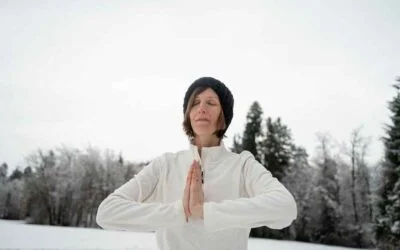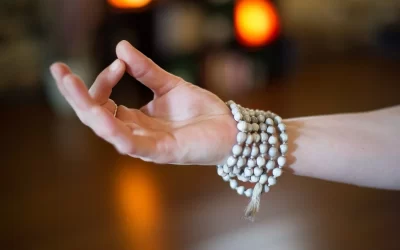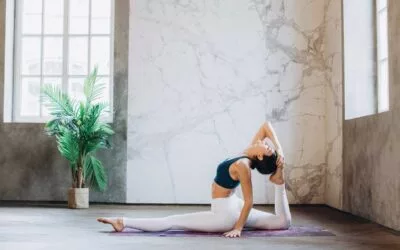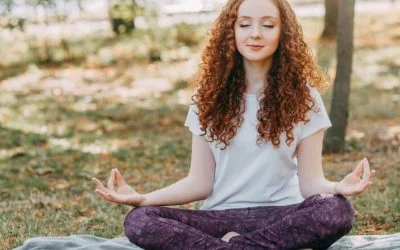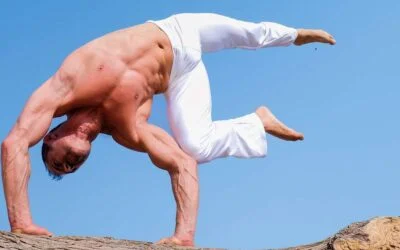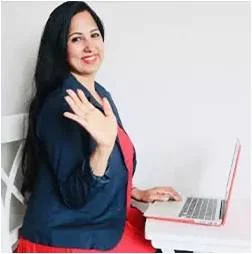The part of life often becomes a cause of stress, anxiety and depression for most of the people. Many people are so disturbed by anxiety and stress, that are clearly reflected in the lines on their foreheads, which also explains their mental condition. So first of all, you should understand what is anxiety and how yoga helps to cure it?
People are fell pressure and tension that they are neither able to relax nor take time for themselves. As a result stress and depression lapped them up. Not only that, their minds are not able to concentrate.
What Is Anxiety?
Generally, anxiety is a disorder that can be caused by fear and nervousness. These feelings can affect our behavior and can also affect us physically if they persist for a long time.
Anxiety can make you unstable and restless. However, if the symptoms of anxiety are in the initial stage, they do not have any serious effect, but if these problems persist for a long time, it also affects our everyday life.
Usually, when people face a challenge, they have a concern about that problem in their minds. This is a very common thing. But this concern occurs when the anxiety affects sleep or other works. The problem of anxiety arises when you have to put more response or efforts needed to face that challenge.
How Does Yoga Helps to Alleviate Anxiety?
While doing yoga, we have to do some postures and sometimes take deep breathing. These actions activate our parasympathetic nerves system. So that our body and mind seem to relax. During yoga, the tension starts to be removed from the body while the muscles begin to relax.
The activation of the parasympathetic nerves system helps the endorphins to be released, also called Happy Hormones. Breathing and dropping in the practice of yoga and pranayama helps to keep stress and anxiety away.
People resort to medicines to deal with these mental conditions. But through yoga you can remove stress and tension. Here are some yoga postures for anxiety;
Beginners Yoga for Anxiety and Depression.
- Baddha Konasana or Cobbler Pose.
- Ustrasana or Camel Pose.
- Paschimottanasana or Seated Forward Bend.
- Dandasana or Staff Pose.
- Setu Bandhasana or Bridge Pose.
- Utthita Trikonasana or Extended Triangle Pose.
- Marjariasana or Cat Pose.
- Halasana or Plough Pose.
- Dhanurasana or Bow Pose.
- Shavasana or Corpse Pose.
Baddha Konasana or Cobbler Pose for Anxiety and Depression.
This posture is also called butterfly pose or cobbler pose. It helps to improve blood circulation throughout the body and organs, relieve tension and fatigue. It also increase flexibility of thighs and hips as well as it stretch the knees, inner thighs and spinal cord.
Effective in reducing asthma, flat feet, impotence and high BP. Regular practice also beneficial for incurable diseases.
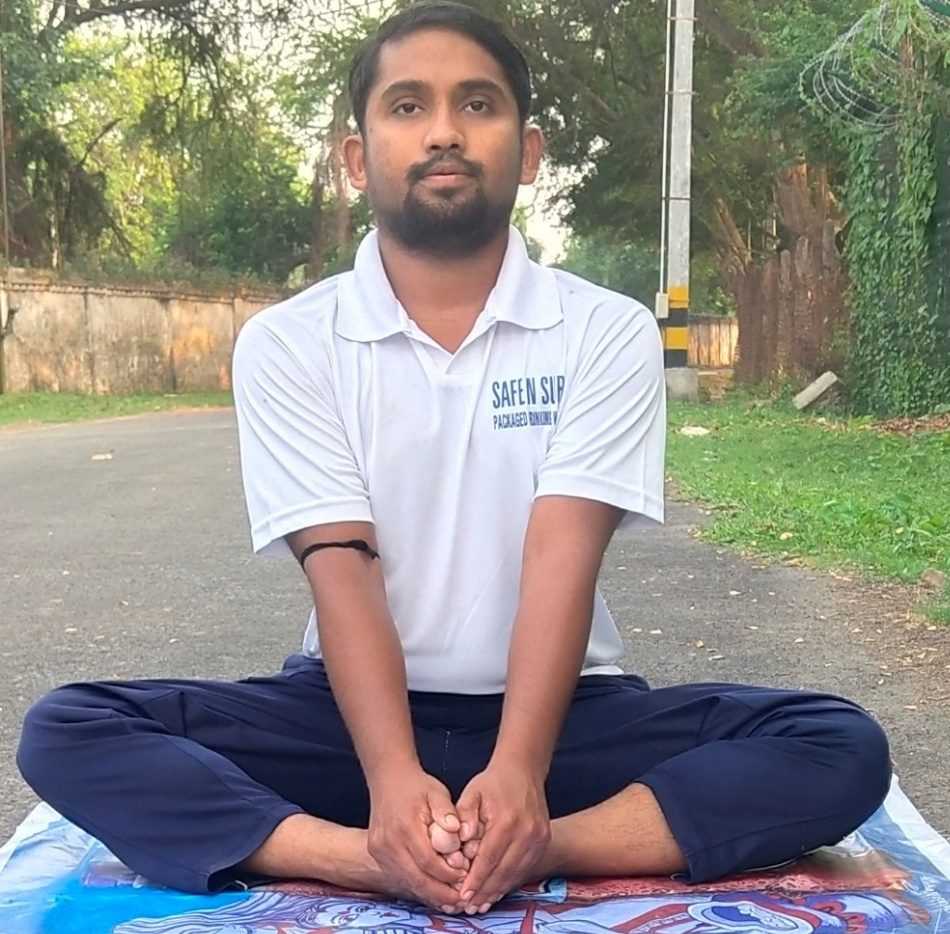
How To Do Baddha Konasana or Cobbler Pose?
Step 1.
Sit upright while doing this posture and spread your legs straight.
Step 2.
Now bend your legs in such a way that both legs touch each other. But at this stage, keep your knees straight in the direction of the side.
Step 3.
Now try to bring your ankles to the pelvis. The more pelvis will be as good as you try to bring towards the ankles.
Step 4.
Now try to touch your thighs to the ground. During this posture, slowly take the breath inside and leave.
Contradiction.
Those who have pain, injury or who have problems with the groin or have a groin injury in their knees should avoid this posture.
Ustrasana or Camel Pose for Anxiety and Depression.
This posture is also called camel pose because the body’s posture is like a camel. But keep in mind practice this pose before 4-5 hours of eating, Ustrasana is able to relieve all fatigue and stress and also improve blood circulation.
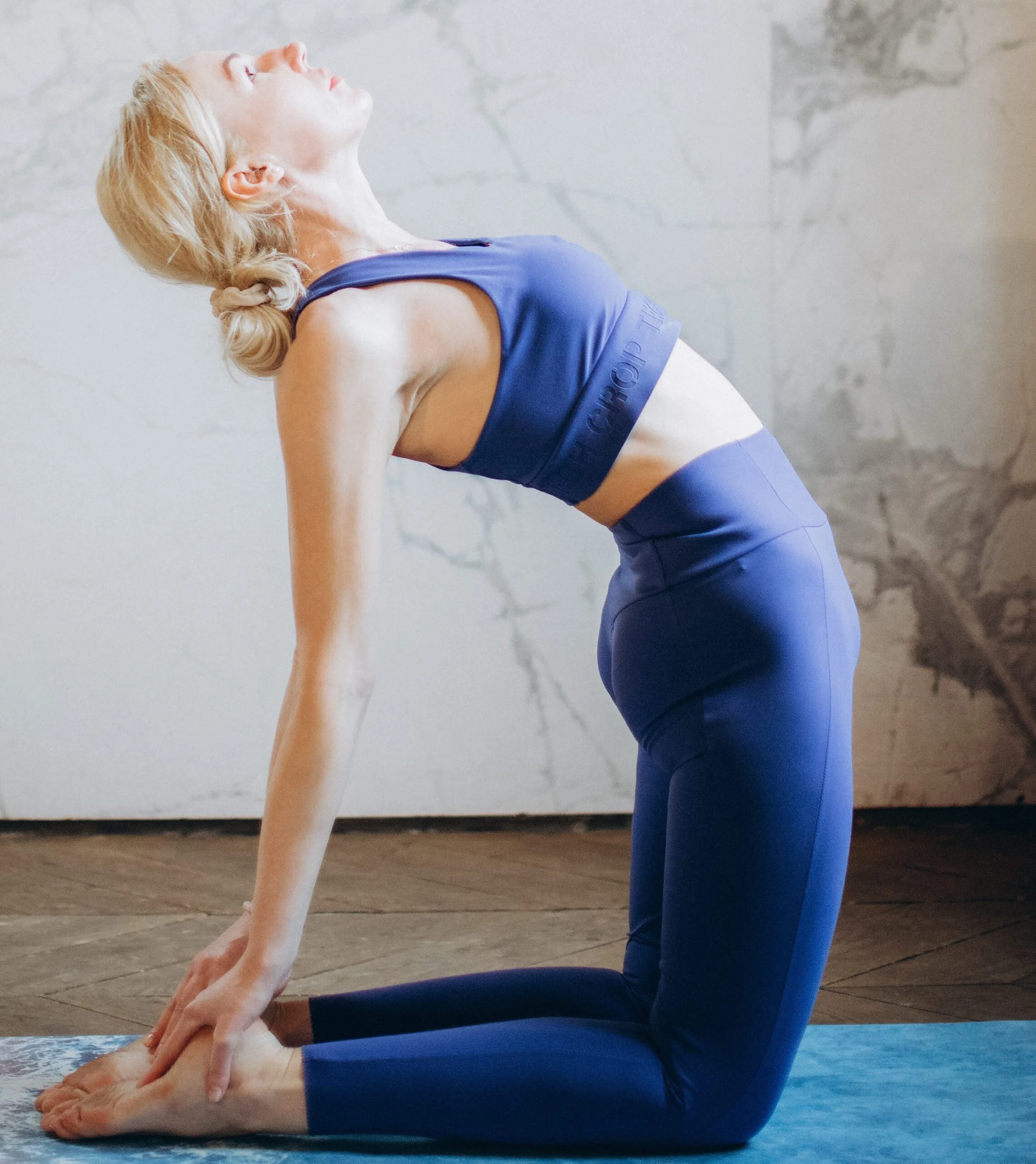
How To Do Ustrasana or Camel Pose?
Step 1.
Sit on the knees on a mat. Bend the legs in the previous direction and straighten it.
Step 2.
Now take your body in the back direction and place both hands on the ankles.
Step 3.
Keep both the arms straight. Practice this posture in the morning.
Contradiction.
Person those are suffering from high blood pressure or Low Blood Pressure, heart disease and migraine should avoid this posture.
Paschimottan asana or Seated Forward Bend Pose for Anxiety and Depression.
This posture is also called Seated Forward Bend pose. Do this posture at least 3-4 times a day. This yoga posture is a perfect to reduce fatigue, anxiety, stress and depression, as well as to reduce obesity. Not only that, this posture is helpful to increase the sperm count.
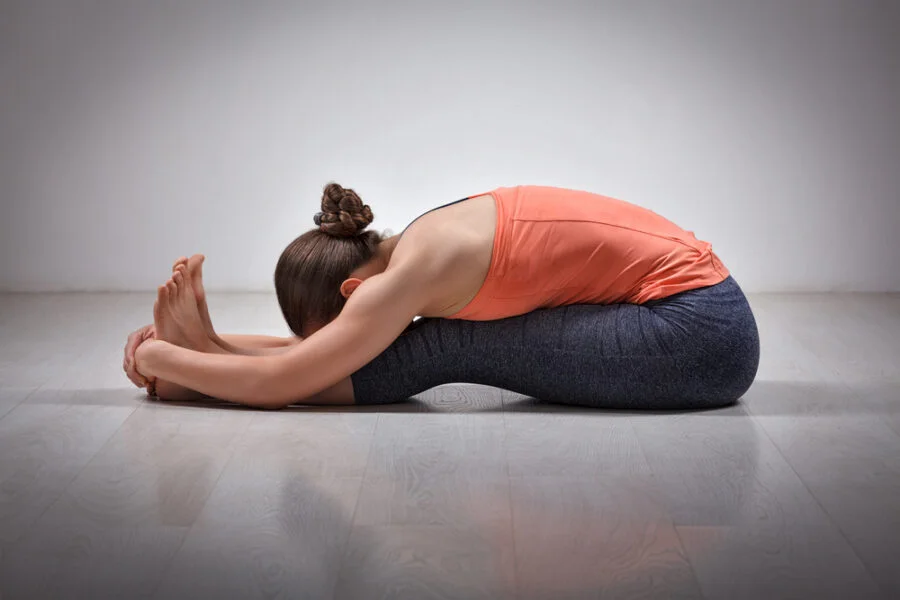
How To Do Paschimottan asana or Seated Bend Forward Pose?
Step 1.
First sit in a straight position on a mat. Now spread your legs in the forward direction.
Step 2.
Then straighten your arms and take them forward and try to catch the toes (especially the thumb).
Step 3.
In the meantime, try to touch the knees with your nose, but keep the knees and both sides straight.
Contradiction.
The Paschimottan asana are not for those who have complain of ulcers in the abdomen. Do not practice it at all if your intestine is swollen. This yoga should not be practiced if there is a pain in the groin.
Dandasana or Staff Pose for Anxiety and Depression.
This asana is also called Staff Pose. It strengthens the back muscles, stretch the shoulders and chest. Improves the posture of the body. The problems associated with the spinal cord are removed. It helps in increasing concentration and also beneficial for asthma disease.
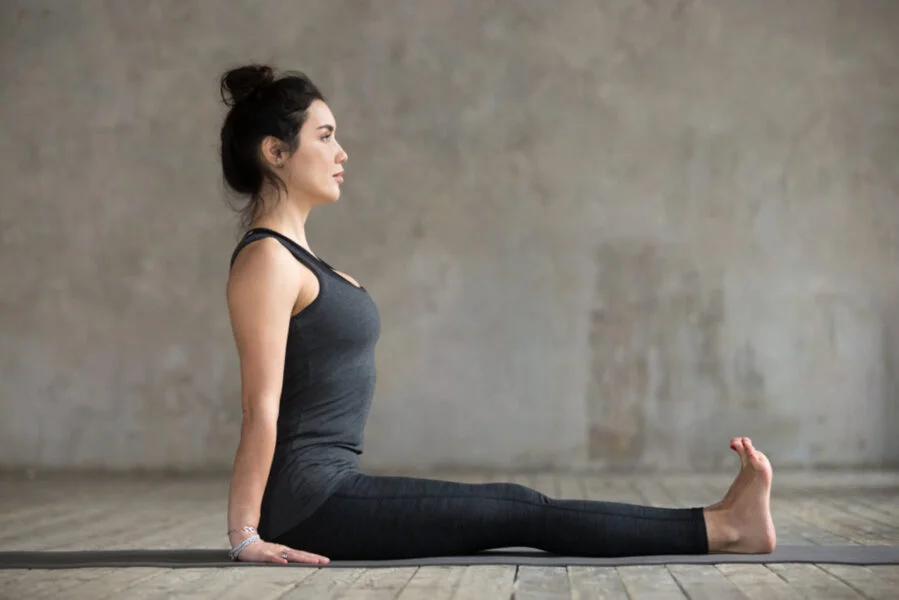
How To Do Dandasana or Staff Pose?
Step 1.
Sit upright on the ground and then spread the legs straight.
Step 2.
Now turn the toes inward but keep the soles in the outside direction.
Step 3.
Keep the sides straight with the waist and place the palms with the ground with the butts (hip).
Step 4.
Now try to bend the head downwards and focus the eye on the nose. Do this posture 5-6 times a day for 25 to 30 seconds.
Contradiction.
If there is a blood pressure or heart disease, then do not do these postures or consult a doctor.
Click here to know about Nutrition for Gastro Esophageal Reflux Disease.
Setu Bandhasana or Bridge Pose for Anxiety and Depression.
In this posture, the body becomes in the same shape as the bridge, so it is called Bridge Pose. Make the posture for 1-2 minutes. It strengthens and relaxes the back muscles. Stretch the back, chest and neck. Makes the mind anxious and relax from the stress. Opens the lungs and fixes the problem related to thyroid and improve digestion.
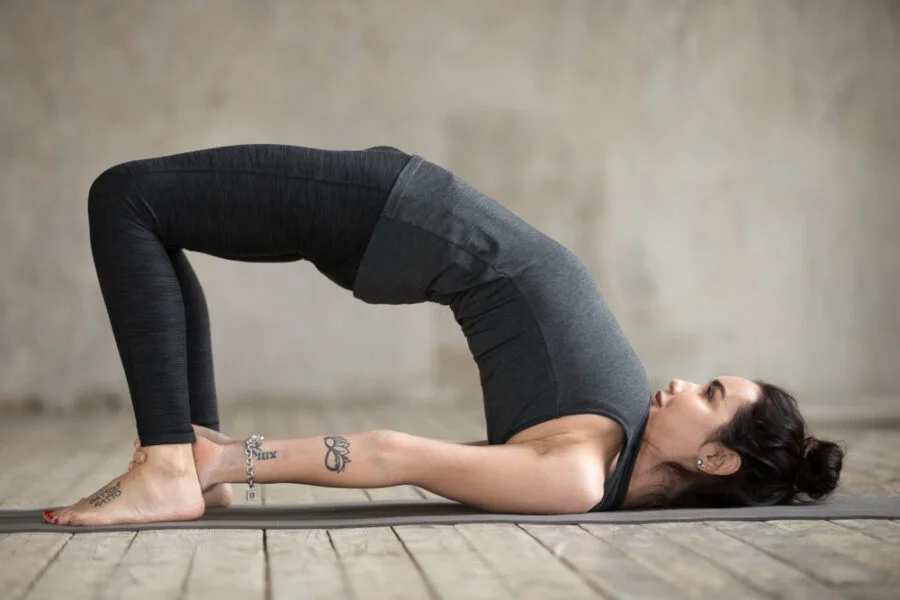
How To Do Setu Bandhasana or Bridge Pose?
Step 1.
Lie down on your back at the beginning.
Step 2.
Bend your knees. Keep the knees and legs in one way, two legs should be 10-12 inches away from each other. Keep the hands with the body. The palms remained on the ground.
Step 3.
Breathe, gently raise your lower, middle and then top of your back from the ground. Gently take your shoulders inward. Without moving the chin, put your chest with your chin and support your shoulders, hands and feet to your weight. Keep the lower part of the body stable. Both the thighs will remain together.
Step 4.
In the meantime, you can raise the upper part of the body by pressing your hands on the ground. You can also support your waist with your hands.
Contradiction.
If you have some problems with the waist and neck, do not do this posture.
| Read Now: Yoga and Its Several Health Benefits. |
Utthita Trikonasana or Extended Triangle Pose for Anxiety and Depression.
This asana is also called Extended Triangle Pose. Triangle means triangular and Posture means Position. This posture strengthens the legs, knees, ankles, hands and thorax. Stretch the buttocks, hips, thigh muscles, shoulders, thoracic and spinal cord. However, this yoga posture also increases physical and mental hierarchy, improves digestion, relieve stress, anxiety and back pain etc.

How To Do The Utthita Trikonasana or Extended Triangle Pose?
Step 1.
Stand upright and make a convenient distance between your legs (about 2 to 4 feet). Rotate your right paws to 90 degrees and left claws to 15 degrees.
Step 2.
Bring the center of your right heel into the center of the rotation that is formed with your left foot. Make sure your claws are pressing the ground and the body weight is equally on both legs.
Step 3.
Take a deep breath inward, turn your body right, move your body downwards from the hips, keep the waist upright, lift your left hand up in the air and move the right hand down to the ground. Thus keep your two hands parallel.
Step 4.
Place your right hand on the heel or keep your waist without bending, as much as possible. Pull your left hand towards the roof and bring it into the parallel of the shoulders. Put your head in the middle, center the eye sight towards the palm.
Always remember that your body should folded from the edge. It should not tilted forward or backward. Buttocks and thorax completely remain in open position.
Stay stable and maintain a maximum stretch in the body. Take a deep breaths and relax the body with every breath that goes out.
Thereafter, inhale, rise upwards, bring your hands downwards and straighten the legs. Repeat the process in same way on the other side also.
Contradiction.
Do not do this posture if you are suffering from migraine, diarrhea, hypertension, neck or back injury.
Marjariasana or Cat Pose for Anxiety and Depression.
Marjar means cat. In this posture you bring a cat-like position. This posture provides a gentle massage to the spinal cord and abdominal organs as well as it stretch back and neck, beneficial for asthma and back pain.
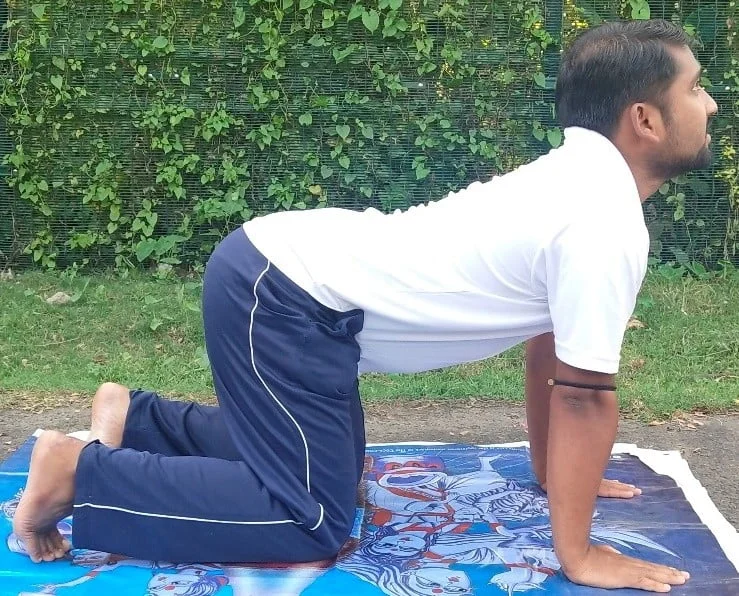
How To Do Marjariasana or Cat Pose?
Step 1.
Come on your knees and hands like horse and your hands should be straight.
Step 2.
Now exhale and bring the head to the chest and round the upper waist out.
Step 3.
Now take the head to the roof while breathing, round the upper waist inward. This posture will bring a stretch in your chest.
Do not exceed 2-3 minutes at the beginning. You can do it longer with regular practice.
Contradiction.
If you have pain in your back and neck, consult a specialist. Do this posture in the proximity of the professional trainer.
Halasana or Plough Pose for Anxiety and Depression.
Halasana is also known as Plough Pose. Like other yoga postures, Halasana has also got his name from an equipment used in farming. The equipment is found not only in India but also in the fables of Tibet, China and Egypt.
Halasan’s regular practice helps to simplify the movement of tendons, muscles and knee joints. In this posture, the body is in the posture of an equipment used in farming. Regular practice of this posture provide physical, mental and emotional supports. These postures help to enhance positivity and peace.

How To Do Halasana or Plough Pose?
Step 1.
Lay down on the support of back.
Step 2.
Take your hands to the body. The palms will remain on the ground.
Step 3.
Lift the legs upwards by dragging the breath inward.
Step 4.
The legs would make an angle of 90 degrees from the waist. Pressure will remain on the abdominal muscles.
Step 5.
Take the legs up and support the waist with your hands. Tilt the straight legs towards the head and move the legs behind the head.
Step 6.
Touch the ground with the toes. Remove the hands from the waist and keep it straight on the ground. The palm will remain on the lower side.
Step 7.
The waist will remain parallel to the ground. Stay in the same situation for a minute and focus on the breath. Thereafter, bring the legs back to the ground.
Do not rush to leave the posture. Bring the legs back to normal condition at a uniform speed.
Contradiction.
Avoid if you are suffering from cervical spondylitis, stiffness in the spine, hypertension, pain in the groin, pregnancy and menopause and heart disease.
| Read Now: How Many Days to Workout to Stay Fit. |
Dhanurasana or Bow Pose for Anxiety and Depression.
This word means bow. This pose is very beneficial for your spinal cord. It helps to expand not only the shoulders but also chest and neck muscles. It strengthens the back muscles and helps to strengthen the core.

How To Do Dhanurasana or Bow Pose?
Step 1.
Lay on the ground or mat on the support of abdominal. Bend the knees of both legs and hinge the ankles of the hips.
Step 2.
Now hold your legs with the hands. Lift your thighs and chest up as much as you can.
Step 3.
Maintain this posture for 30-60 seconds. Do all the steps in the opposite order to get out of the posture.
Contradiction.
Should avoid if you have spinal cord injury, recent operation in the abdomen, hernia or ulcer, TB, pregnancy and menstruation.
Shavasana or Corpse Pose for Anxiety and Depression.
It is one of the best yoga postures to relieve depression and anxiety. It gives tremendous comfort not only to the body but also to the mind. Difficult workouts usually include stretching, twisting and contracting of the muscles. After such workouts, it becomes very important to relax the body to recharge.
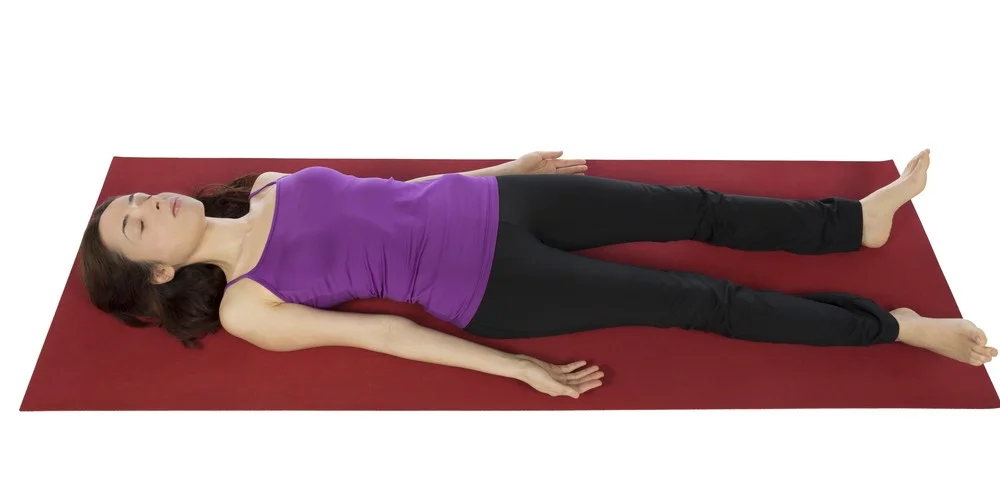
How To Do Shavasana or Corpse Pose?
Step 1.
Sit on the ground or mat. Try to lengthen the spinal cord by pressing the ground with the hand and breath.
Step 2.
Now lie down on the straight waist. Keep a distance of up to 2 feet between the legs. Keep the falcons from the trunk to 45 degrees. Palms should be on the roof side.
Step 3.
Keep your eyes closed while relax the entire body and mind.
Step 4.
Try to calm your breathing and slow down. The more breathing will be calm and slow, the more you will feel the reliance. Stay in the posture for 5 to 10 minutes.
Focus on breathing to remove stress. Lightly start shaking the toes of the feet and hands. Now lift the hand up and stretch the body and gently get up and sit in Sukhasana.
After workouts or yoga, you must practice the Shavasana. It also gives relief to the muscles. With the 5-10 minutes of regular practice, gives you a lot of energy.
Contradiction.
There are no contradictions for this pose. Avoid this posture if you have refused to lie directly on the ground by a doctor.
Points To Remember.
These postures are a little difficult, but by frequent practice you easily perform this posture. However, do not take extra pressure to do any posture.
If the breathing starts to thrive or the heartbeat starts to grow, stop doing the posture immediately.
Do these postures with other exercise in the morning. Do not eat anything for at least 1-2 hours after doing them.
Even if you have diabetes, take appropriate advice from your doctor once before doing these yoga.
These postures are very beneficial. Apart from fatigue, stress and depression, they strengthen the muscles and also improve blood circulation. It also help in reducing obesity.
Other Yoga for Anxiety and Depression.
Yin Yoga for Anxiety.
Yin yoga calm both body and mind. In particular, this yoga support the process of detoxification. Yin Yoga Mudra is traditionally held for 3 to 5 minutes. Yin Yoga support several joints by a process of detoxification. While poses are performed the joints are deprived of important nutrients and prana. Once the pose is released, a rebounding pose is encouraged nutrients to be brought back into the joints. This flood of energy cleanses toxins from joints and reduces inflammation. This flow of energy can be felt in the emotional body as well as in the spirit of liberation. Now a days, yin yoga can also be practiced by several students and beginners, through which you can start a beautiful day.
Kundalini Yoga for Depression.
Kundalini yoga is one of the powerful yoga for depression. This meditation refreshes you completely and is a killer of depression. It builds a new biochemical system, gives a capacity and ability to deal with life, and establishes a direct relationship with the pranic body.
How To Do Kundalini Yoga?
Sit in an easy posture with a straight spine, stretch the sides straight forward, parallel to the ground. Close the right hand in the fist, wrap the left hand fingers around it, touch the base of the palms, pull the thumb together and straight up. The eyes are focused on the thumb.
Breathe for 5 seconds, and exhale for 5 seconds without holding your breath, and then hold the breath for 15 seconds. Continue the cycle starting from 3-5 minutes and maximum upto 11 minutes. Move slowly. You can also hold your breath for maximum 1 minute.
Bottom Line.
The daily practice of yoga gives away stress, anxiety and provide relief to the mind. If the habit of starting the day with the practice of these extra ordinary and essential yoga, then it can be arranged to a great extent.
Yoga reaches a lot of neuromuscular information in the body’s nerves system. The body helps to absorb those information in the body and soothe the mind.
In addition, this yoga poses also eradicate stress and anxiety. Once the mind and body are stress-free, you will find that you want to practice them every day.
+1 Source
Freaktofit has strict sourcing guidelines and relies on peer-reviewed studies, educational research institutes, and medical organizations. We avoid using tertiary references. You can learn more about how we ensure our content is accurate and up-to-date by reading our editorial policy.
- Neuromuscular Disorders; https://medlineplus.gov/neuromusculardisorders.html

 Workout
Workout
 Meditation
Meditation


 Stories
Stories


 Podcast
Podcast E-book
E-book


